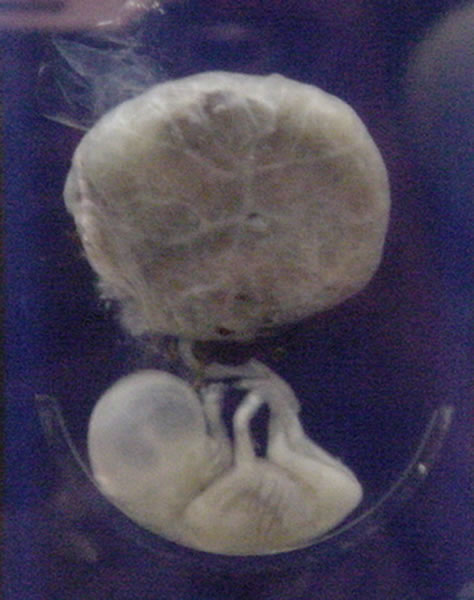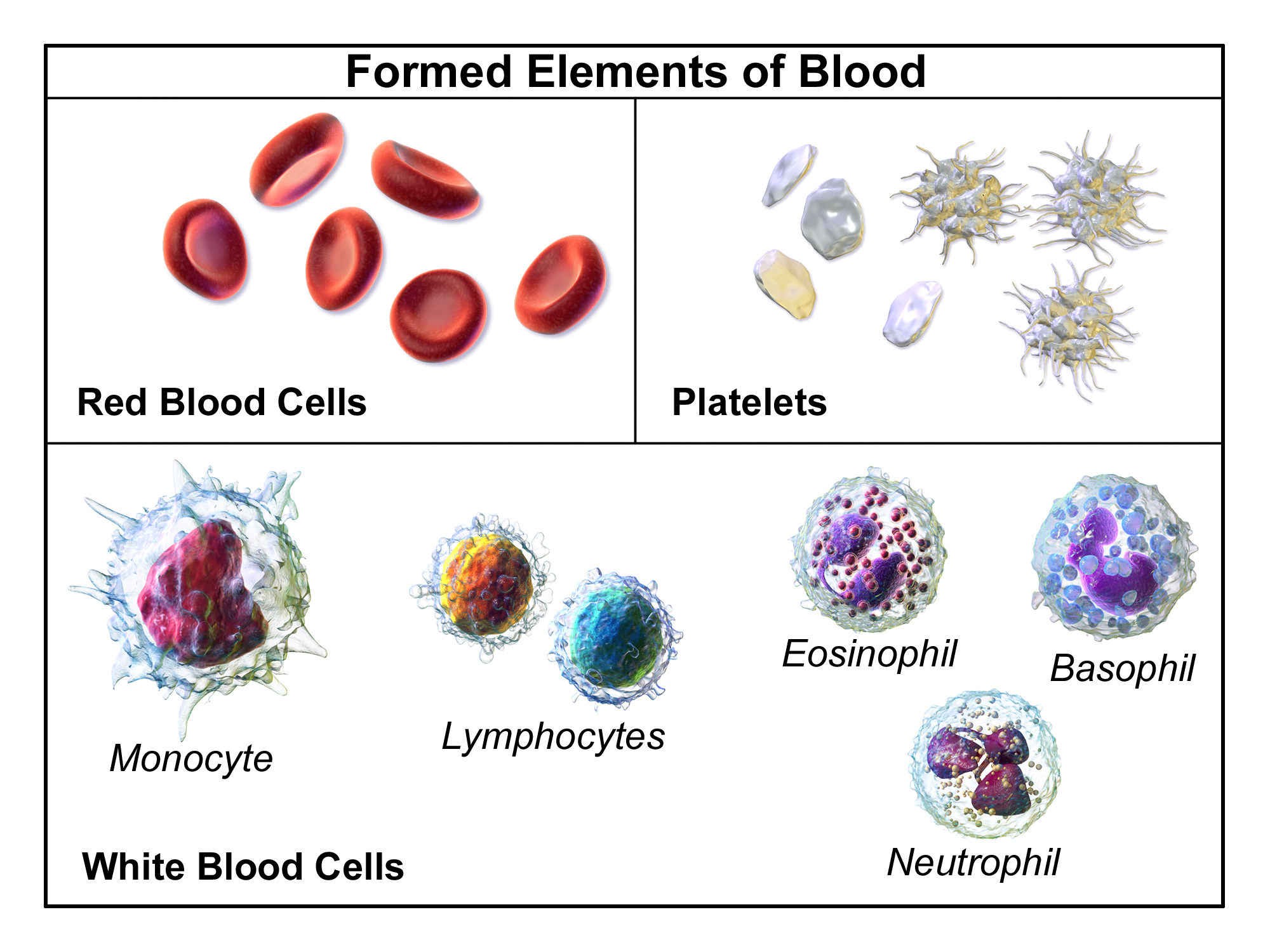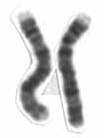|
Obstetrical Bleeding
Obstetrical bleeding is bleeding in pregnancy that occurs Antepartum bleeding, before, during, or Postpartum bleeding, after childbirth. Bleeding before childbirth is that which occurs after 24 weeks of pregnancy. Bleeding may be vaginal or less commonly into the abdominal cavity. Bleeding which occurs before 24 weeks is known as early pregnancy bleeding. Causes of bleeding before and during childbirth include cervicitis, placenta previa, placental abruption and uterine rupture. Causes of bleeding after childbirth include poor uterine tone, poor contraction of the uterus, retained products of conception, and coagulopathy, bleeding disorders. About 8.7 million cases of severe maternal bleeding occurred in 2015 resulting in 83,000 deaths. Between 2003 and 2009, bleeding accounted for 27% of maternal deaths globally. Later pregnancy Antepartum bleeding (APH), also prepartum hemorrhage, is bleeding during pregnancy from the 24th week [...More Info...] [...Related Items...] OR: [Wikipedia] [Google] [Baidu] |
Obstetrics
Obstetrics is the field of study concentrated on pregnancy, childbirth and the postpartum period. As a medical specialty, obstetrics is combined with gynecology under the discipline known as obstetrics and gynecology (OB/GYN), which is a surgical field. Main areas Prenatal care Prenatal care is important in screening for various complications of pregnancy. This includes routine office visits with physical exams and routine lab tests along with telehealth care for women with low-risk pregnancies: Image:Ultrasound_image_of_a_fetus.jpg, 3D ultrasound of fetus (about 14 weeks gestational age) Image:Sucking his thumb and waving.jpg, Fetus at 17 weeks Image:3dultrasound 20 weeks.jpg, Fetus at 20 weeks First trimester Routine tests in the first trimester of pregnancy generally include: * Complete blood count * Blood type ** Rh-negative antenatal patients should receive RhoGAM at 28 weeks to prevent Rh disease. * Indirect Coombs test (AGT) to assess risk of hem ... [...More Info...] [...Related Items...] OR: [Wikipedia] [Google] [Baidu] |
Fetus
A fetus or foetus (; : fetuses, foetuses, rarely feti or foeti) is the unborn offspring of a viviparous animal that develops from an embryo. Following the embryonic development, embryonic stage, the fetal stage of development takes place. Prenatal development is a continuum, with no clear defining feature distinguishing an embryo from a fetus. However, in general a fetus is characterized by the presence of all the major body organs, though they will not yet be fully developed and functional, and some may not yet be situated in their final Anatomy, anatomical location. In human prenatal development, fetal development begins from the ninth week after Human fertilization, fertilization (which is the eleventh week of Gestational age (obstetrics), gestational age) and continues until the childbirth, birth of a newborn. Etymology The word ''wikt:fetus#English, fetus'' (plural ''wikt:fetuses#English, fetuses'' or rarely, the solecism ''wikt:feti#English, feti''''Oxford English Dict ... [...More Info...] [...Related Items...] OR: [Wikipedia] [Google] [Baidu] |
Gynecologic Bleeding
Vaginal bleeding is any expulsion of blood from the vagina. This bleeding may originate from the uterus, vaginal wall, or cervix. Generally, it is either part of a normal menstrual cycle or is caused by hormonal or other problems of the reproductive system, such as abnormal uterine bleeding. Regular monthly vaginal bleeding during the reproductive years, menstruation, is a normal physiologic process. During the reproductive years, bleeding that is excessively heavy (menorrhagia or heavy menstrual bleeding), occurs between monthly menstrual periods (intermenstrual bleeding), occurs more frequently than every 21 days (abnormal uterine bleeding), occurs too infrequently (oligomenorrhea), or occurs after vaginal intercourse (postcoital bleeding) should be evaluated. The causes of abnormal vaginal bleeding vary by age, and such bleeding can be a sign of specific medical conditions ranging from hormone imbalances or anovulation to malignancy (cervical cancer, vaginal cancer or uterine ca ... [...More Info...] [...Related Items...] OR: [Wikipedia] [Google] [Baidu] |
Molar Pregnancy
A molar pregnancy, also known as a hydatidiform mole, is an abnormal form of pregnancy in which a non-viable fertilized egg Implantation (embryology), implants in the uterus. It falls under the category of gestational trophoblastic diseases. During a molar pregnancy, the uterus contains a growing mass characterized by swollen chorionic villi, resembling clusters of grapes. The occurrence of a molar pregnancy can be attributed to the fertilized egg lacking an original maternal Nucleus (cell), nucleus. As a result, the products of conception may or may not contain fetal tissue. These molar pregnancies are categorized into two types: partial moles and complete moles, where the term 'Mole (skin marking), mole' simply denotes a clump of growing tissue or a ‘growth'. A complete mole is caused by either a single sperm (90% of the time) or two sperm (10% of the time) combining with an egg that has lost its DNA. In the former case, the sperm reduplicates, leading to the formation of a "c ... [...More Info...] [...Related Items...] OR: [Wikipedia] [Google] [Baidu] |
Hematologic Disorder
Hematologic diseases are disorders which primarily affect the blood and blood-forming organs. Hematologic diseases include rare genetic disorders, anemia, HIV, sickle cell disease and complications from chemotherapy or transfusions. Myeloid * Hemoglobinopathies (congenital abnormality of the hemoglobin molecule or of the rate of hemoglobin synthesis) ** Sickle cell disease ** Thalassemia ** Methemoglobinemia * Anemias (lack of red blood cells or hemoglobin) ** Iron-deficiency anemia ** Megaloblastic anemia *** Vitamin B12 deficiency **** Pernicious anemia *** Folate deficiency ** Hemolytic anemias (destruction of red blood cells) *** Genetic disorders of RBC membrane **** Hereditary spherocytosis **** Hereditary elliptocytosis **** Congenital dyserythropoietic anemia *** Genetic disorders of RBC metabolism **** Glucose-6-phosphate dehydrogenase deficiency (G6PD) **** Pyruvate kinase deficiency *** Immune mediated hemolytic anemia ( direct Coombs test is positive) **** Autoimmu ... [...More Info...] [...Related Items...] OR: [Wikipedia] [Google] [Baidu] |
Cervical Cancer
Cervical cancer is a cancer arising from the cervix or in any layer of the wall of the cervix. It is due to the abnormal growth of cells that can invade or spread to other parts of the body. Early on, typically no symptoms are seen. Later symptoms may include abnormal vaginal bleeding, pelvic pain or pain during sexual intercourse. While bleeding after sex may not be serious, it may also indicate the presence of cervical cancer. Virtually all cervical cancer cases (99%) are linked to genital human papillomavirus infection (HPV); most who have had HPV infections, however, do not develop cervical cancer. HPV 16 and 18 strains are responsible for approximately 70% of cervical cancer cases globally and nearly 50% of high grade cervical pre-cancers. Minor risk factors include smoking, a weak immune system, birth control pills, starting sex at a young age, and having many sexual partners. Genetic factors also contribute to cervical cancer risk. Cervical cancer typically develo ... [...More Info...] [...Related Items...] OR: [Wikipedia] [Google] [Baidu] |
Kleihauer–Betke Test
The Kleihauer–Betke ("KB") test, Kleihauer–Betke ("KB") stain, Kleihauer test or acid elution test is a blood test used to measure the amount of fetal hemoglobin transferred from a fetus to a mother's bloodstream. It is usually performed on Rhesus blood group system, Rh-negative mothers to determine the required dose of Rho(D) immune globulin (RhIg) to inhibit formation of Rh antibody, antibodies in the mother and prevent Rh disease in future Rh-positive children. It is named after Enno Kleihauer and Klaus Betke who described it in 1957. Test details The KB test is the standard method of quantitating Fetal-maternal haemorrhage, fetal–maternal hemorrhage (FMH). It takes advantage of the differential resistance of fetal hemoglobin to acid. A standard blood smear is prepared from the mother's blood and exposed to an acid bath. This removes adult hemoglobin, but not fetal hemoglobin, from the red blood cells. Subsequent staining, using Shepard's method, makes fetal cells (conta ... [...More Info...] [...Related Items...] OR: [Wikipedia] [Google] [Baidu] |
Complete Blood Count
A complete blood count (CBC), also known as a full blood count (FBC) or full haemogram (FHG), is a set of medical laboratory tests that provide cytometry, information about the cells in a person's blood. The CBC indicates the counts of white blood cells, red blood cells and platelets, the concentration of hemoglobin, and the hematocrit (the volume percentage of red blood cells). The red blood cell indices, which indicate the average size and hemoglobin content of red blood cells, are also reported, and a white blood cell differential, which counts the different types of white blood cells, may be included. The CBC is often carried out as part of a medical assessment and can be used to monitor health or diagnose diseases. The results are interpreted by comparing them to Reference ranges for blood tests, reference ranges, which vary with sex and age. Conditions like anemia and thrombocytopenia are defined by abnormal complete blood count results. The red blood cell indices can provi ... [...More Info...] [...Related Items...] OR: [Wikipedia] [Google] [Baidu] |
Hemolytic Disease Of The Newborn
Hemolytic disease of the newborn, also known as hemolytic disease of the fetus and newborn, HDN, HDFN, or erythroblastosis fetalis, is an alloimmune condition that develops in a fetus at or around birth, when the IgG molecules (one of the five main types of antibodies) produced by the mother pass through the placenta. Among these antibodies are some which attack antigens on the red blood cells in the fetal circulation, breaking down and destroying the cells. The fetus can develop reticulocytosis and anemia. The intensity of this fetal disease ranges from mild to very severe, and fetal death from heart failure ( hydrops fetalis) can occur. When the disease is moderate or severe, many erythroblasts (immature red blood cells) are present in the fetal blood, earning these forms of the disease the name ''erythroblastosis fetalis'' ( HDFN represents a breach of immune privilege for the fetus or some other form of impairment of the immune tolerance in pregnancy. Various types of H ... [...More Info...] [...Related Items...] OR: [Wikipedia] [Google] [Baidu] |
Haemophilia C
Haemophilia C (also known as plasma thromboplastin antecedent (PTA) deficiency or Rosenthal syndrome) is a mild form of haemophilia affecting both sexes, due to factor XI deficiency. It predominantly occurs in Ashkenazi Jews. It is the fourth most common coagulation disorder after von Willebrand's disease and haemophilia A and Haemophilia B, B. In the United States, it is thought to affect 1 in 100,000 of the adult population, making it 10% as common as haemophilia A. Signs and symptoms In terms of the signs/symptoms of haemophilia C, unlike individuals with Haemophilia A and Hemophilia B, B, people affected by it are not ones to bleed spontaneously. In these cases, haemorrhages tend to happen after a major surgery or injury. However, people affected with haemophilia C might experience symptoms closely related to those of other forms of haemophilia such as the following: Cause Haemophilia C is caused by a deficiency of coagulation factor XI and is distinguished from haemophilia ... [...More Info...] [...Related Items...] OR: [Wikipedia] [Google] [Baidu] |
Factor IX Deficiency
Haemophilia B, also spelled hemophilia B, is a blood clotting disorder causing easy bruising and bleeding due to an inherited mutation of the gene for factor IX, and resulting in a deficiency of factor IX. It is less common than factor VIII deficiency (haemophilia A). Haemophilia B was first recognized as a distinct disease entity in 1952. It is also known by the eponym ''Christmas disease'', named after Stephen Christmas, the first patient described with haemophilia B. In addition, the first report of its identification was published in the Christmas edition of the ''British Medical Journal''. Most individuals who have Hemophilia B and experience symptoms are men. The prevalence of Hemophilia B in the population is about one in 40,000; Hemophilia B represents about 15% of patients with hemophilia. Many female carriers of the disease have no symptoms. However, an estimated 10-25% of female carriers have mild symptoms; in rare cases, female carriers may have moderate or severe sy ... [...More Info...] [...Related Items...] OR: [Wikipedia] [Google] [Baidu] |
Von Willebrand Disease
Von Willebrand disease (VWD) is the most common heredity, hereditary coagulopathy, blood-clotting disorder in humans. An acquired form can sometimes result from other medical conditions. It arises from a deficiency in the quality or quantity of von Willebrand factor (VWF), a Protein subunit, multimeric protein that is required for platelet platelet#Adhesion, adhesion. It is known to affect several breeds of dogs as well as humans. The three forms of VWD are hereditary, acquired, and pseudo or platelet type. The three types of hereditary VWD are VWD type 1, VWD type 2, and VWD type 3. Type 2 contains various subtypes. Platelet type VWD is also an inherited condition. In 2008 a new diagnostic category of "Low VWF" was proposed to include those individuals whose von Willebrand factor levels were in the 30–50 IU/dL range, below the normal reference range but not low enough to be von Willebrand disease. Patients with low VWF were sometimes noted to experience bleeding, despite ... [...More Info...] [...Related Items...] OR: [Wikipedia] [Google] [Baidu] |







